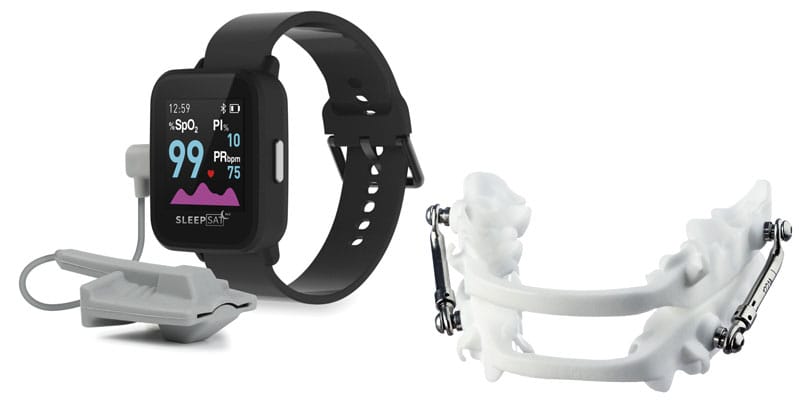
From identifying patients with a sleep disorder or an airway issue to appliance selection to delivery and follow-up, Great Lakes can provide expert insight, extensive appliance knowledge, and more than 35 years of fabrication experience.
For experienced dentists who recognize patients who can benefit from sleep or airway therapy, Great Lakes can assist in all phases of treatment, from screening and identifying the appropriate appliance therapy to delivery, follow-up, and a secondary post-wear screening.
For a doctor new to sleep/airway, Great Lakes can help implement sleep/airway therapy into their practice and train both the doctor and staff.
Great Lakes helps office staff to understand the proper use of sleep screeners and interpret the results, offering both the 3D SleepSat screener and the Nonin sleep screener. Reporting from both home sleep screeners provides excellent insight into the severity of sleep or airway issues, ranging from mild to moderate to severe.
Taking a protrusive bite position is an essential step in patient therapy. This ‘bite position’ effectively opens the airway to improve breathing and facilitate obstruction-free sleep. Ideal for mandibular repositioning, the George Gauge® allows the clinician to capture the protrusive bite registration and vertical opening without relying on the patient to achieve proper positioning. The George Gauge eliminates the guesswork, is exceptionally accurate, and easy to use.
The George Gauge single-use bite fork with the bite registration in place is sent to the Lab. Great Lakes will generate models, and sleep specialists and designers can help determine the ideal appliance for the patient and their specific needs. An intra-oral scan of the protrusive bite position can also be sent electronically to the Lab.
Great Lakes’ sleep and airway team will walk through a series of questions to help recommend the most effective appliance. These include:
- Where is the ideal position for the advancement mechanism – buccal or anterior? Different appliances are suitable based on the position of the advancement mechanism. Herbst and Panthera feature buccal placement, while TAP appliances feature anterior placement.
- What material is preferred?
- Basic, thin Biocryl: EMAs
- Nylon: Nylon Herbst®, Panthera Classic & X3™, OrthoApnea NOA
- Hard/Soft: Medleys and TAPs
- Hard: Herbst® and Medley
- What patient habits should be considered?
- Clenching
- Grinding
- Bruxing
- What patient anatomy considerations are there?
- Edentulous
- Partials/Dentures/Implants
- Short clinical crowns
- Orthodontic therapy
- Dental changes
The answers to these questions will help determine the ideal appliance type for your patient.
Once the patient has been screened for a baseline, the issue is identified, and an appliance has been fabricated, delivered, and worn, a subsequent screening is required. Screening during titration is imperative to see if the patient achieves optimal results. Great Lakes trains the practice to evaluate the screening, reporting, and effectiveness of the sleep appliance.
Great Lakes Sleep team has years of skill and experience, and the Lab has decades of fabrication expertise. Great Lakes can help you and your patients achieve better sleep and airway health outcomes.
Great Lakes is located in Tonawanda, New York, a suburb of Buffalo.




